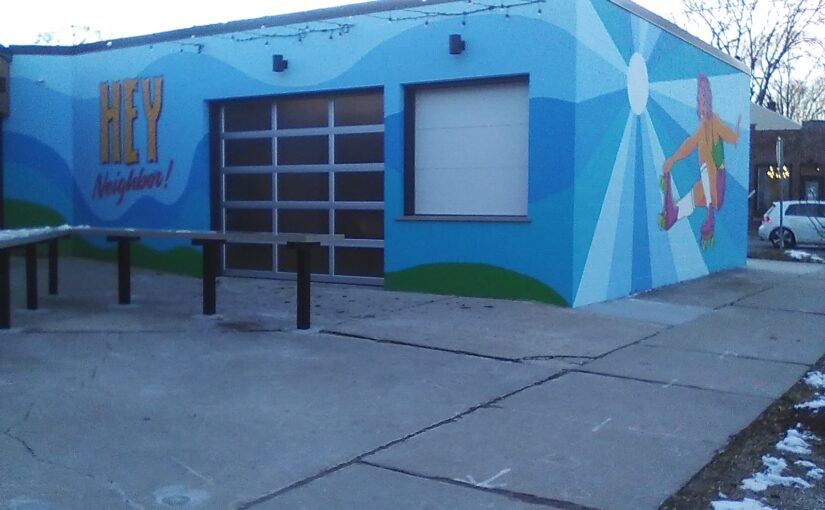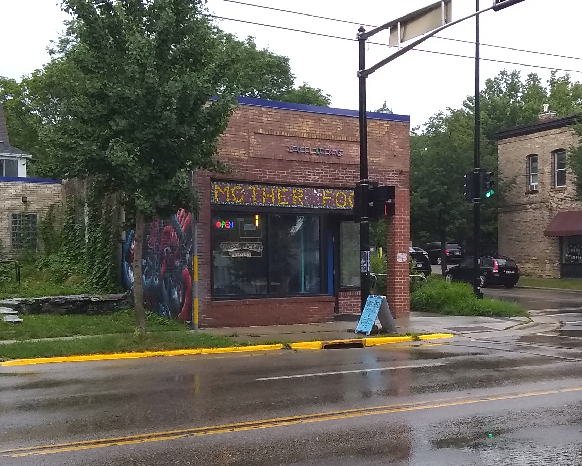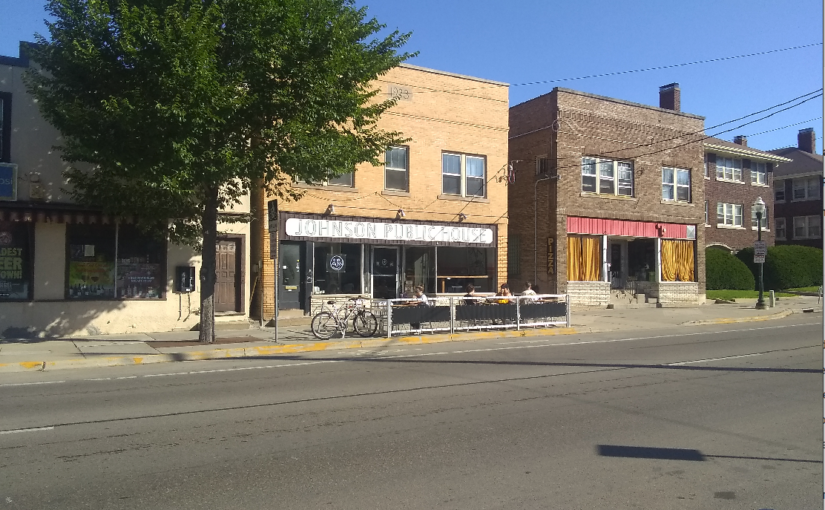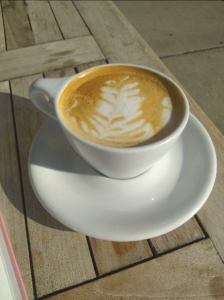The political system in a democratic society allows a diverse group of people to make collective decisions. Here I define politics as the content of deliberations and decisions within such a system, rather than institutions and mechanisms used to bring about decisions. Of course, institutions do affect the content of politics, but that won’t be my focus here. Rather I will focus on different types of political content.
The content of our political discussions, arguments, and bargaining can be categorized into a number of incompatible types. They are about different subjects. These types of politics are all utilized by the major political parties, but we are often unaware of how their incompatibility thwarts political compromise and decisions. And they each leads to unique problems when any one begins to dominate the politics of a country or political party.
One of the basic problems we are seeing with politics today is a transition from a politics of ideas and interests to one primarily of grievance. Although the politics of grievance is perhaps best exemplified by Donald Trump and his followers, grievance is also becoming a dominant political theme on the left.
There is nothing particularly wrong with the inclusion of grievances within our politics. Many grievances are valid and must be addressed by any successful political system. However, when grievance dominates politics, much as when it dominates personal relationships and other social relations, it fosters a bitterness and anger that makes compromise and cooperation difficult.
I do not think that the answer to this problem is a politics dominated by either interests or ideas. A politics dominated by interests lacks any direction or justice and will tend to promote the narrow interests of whatever groups are in the best bargaining position. Likewise a politics dominated by ideas, where we attempt to transform government and society according to some coherent ideology, leads society to ignore the interests of various groups. History also tells us that a politics guided by ideology often justifies dispossession of property and violence in order to bring about the radical social change in line with that ideology.
My primary purpose here is to describe these three types of politics. However, I think that such a discussion provides reason to prefer a politics that mixes interests and ideas, and attempts to limit the inclusion of grievances.
Interests
A view traditionally held by political scientists (for instance, see Dahl’s Democracy and Its Critics) states that democratic politics allow the interests of the public to be expressed in political decisions. Voters will tend to vote according to their interests, and so a widespread franchise that weighs voters roughly equally will tend to create politics that reflect the interests of voters equally as well. Modern western thinkers tend to reduce “interests” to economic interests, though we probably shouldn’t do this. People also have an interest in living within an environment that allows the to act according to their non-economic values as well.
The politics of interests is a politics of negotiation. When people are guided by their interests, they tend to support tax codes in which they pay the least and budgets in which they gain the most. They expect their political representatives to act similarly. The rich, who benefit more from lower taxes more than generous social welfare programs will advocate for lower taxes, whereas the poor will advocate for higher taxes on the wealthy and more generous social welfare programs. Communities will pursue funds for their own roads and infrastructure projects, even when it puts other communities at a disadvantage. Farmers pursue farm subsidies, corporations that need large numbers of workers pursue free trade and open boarders, and labor unions pursue tariffs and closed borders.
Politics from interests tend to be both stable and, given a universal franchise, serve the interests of the most people. There are also ways of creating institutions so that political decisions take into account the interests of minority groups that might be largely ignored within large societies. One of the more powerful tools is the promotion of political localism in which many decisions are left to community governments. This has the effect of allowing national minorities with shared interests to possess majorities or significant minorities within local governments. It also allows for a safety valve, so to speak, so that minorities who believe that their interests are not being respected by local politics can move to a place where they are respected. For all of these reasons politics from interests serve as the stabilizing backbone of a thriving political system.
However, politics from interests are also shallow and myopic. They lack any vision or wider direction that can guide a state or community to become better, and will often promote outcomes that seem unjust. We feel a strong need for political decisions to tend toward some notion of fairness, even when it may disadvantage certain groups that have historically had various advantages. For this reason systems that are dominated by interests will also tend to be unstable in their own way, as people are unwilling to accept immediate personal and regional costs that promote the greater good. Therefore, it is important that political systems are also guided by ideas about what a good society looks like and what is just. They allow people to see how certain political policies will promote larger social goals that they support. A politics of ideas also allows politics to promote a sense of justice, something that binds people together within the society.
Ideas
When politics is too focused on individual and group interests it is very difficult for us to provide arguments for our favored policies that can be accepted as valid by others. Discussions about politics of interests begin and end with the bargaining power of the various groups. Good arguments show others how the result will benefit them and why they couldn’t hope to get a better result. These are politics in the mud.
Arguments about political ideas, on the other hand, allow us to discuss the merits of various political policies abstracted away from the particular bargaining context. Ideas allow us to paint a picture for others about a possible ideal society and describe how various policies might get us there. If politics of interests is fought in the mud, politics from ideas soars through the air.
The libertarian reformation of American economic policy during the 1980s (whatever we may think of it) would have been impossible without a clear vision of its ideals and goals. Free-market advocates did not just argue that their preferred policies would advantage the interests of voters (although they did do this), they also argued that they would create a system in which people were better able to get what they deserved. When taxes were redistributed, in the form of social welfare programs, some people were given things by the government that they had not earned and so did not deserve. Under this view, eliminating redistributive policies makes the system more just. Of course, they also offered an argument from interests (the high taxation required for redistribution is inefficient and so makes us all poorer), but the libertarian ideas were crucial for gaining widespread support even among those who benefited from redistributive policies.
The politics of ideas is important for understanding why people often vote against their interests. Some have wondered “what is wrong with Kanasas” where scores of people of modest means vote against the very redistributive policies that would likely benefit them. One could similarly wonder “what is wrong with California” where scores of rich people vote for redistributive policies and higher taxes that are unlikely to benefit them. They do so because of their political ideals, based upon ideas of what a just and good society is like. They believe that certain types of policies are just, even though those policies don’t benefit them.
It is the very ability of political ideas to support policies not in people’s direct interests that also make them dangerous. Although the politics from interests tend to by myopic, they also keep people grounded. It is rarely in anyone’s direct interests to commit acts of violence, disturb the peace of society, or radically alter important government programs. On the other hand, politics from ideas often call for radical actions and radical shifts in policy. If we are concerned about justice, and we see that a certain group of people are supporting an unjust system, then we may be able to justify violence against them.
Not only do ideas more easily justify radical actions, but they are also more susceptible to manipulation. The ideas that we have are more malleable than our own interests, and few people are any good at examining their own ideas or those provided by others. It was shocking to many how easily a large portion of the Republican party was made to believe that Trump rightly won the 2020 election. I don’t think that this should come as too much of a surprise. Political elites can easily manipulate the political ideas of those who already follow them – it is much more difficult for those leaders to alter the interests of their followers.
Grievance
Politics of interests and ideas are both forward-looking. When people are guided by them they seek the best possible future outcome. The past and present are only relevant in what they say about those future outcomes. However, people also often demand responses to their grievances over what they view as past wrongs. Many grievances are able to be resolved within the judicial system. If someone causes you a demonstrable harm, then in many cases you can file a lawsuit that is meant to resolve that grievance. However, many perceived harms are not subject to intervention by the judicial system; this is the role of a politics of grievance.
Politics of grievance is concerned with those grievances that are not in the purview of the existing judicial system. Those with grievances seek to use the political system to obtain restitution for the harms done to them, sometimes directly from the people who they believe harmed them and other times from society at large. Often times these grievances are valid and the target is indeed responsible, but other times grievances are largely invented (there was never a corresponding harm) or the target is incorrect. Ultimately the burden of differentiating valid and invalid grievances is placed on the political system.
Western political systems are generally good at handling both politics of interests (through bargaining) and politics of ideas (through deliberation), but have more difficulty handling grievances without creating conflict. Conflict is inherent to grievances, because they typically make demands on others without offering them anything in exchange. This is because grievances are backward looking; the perceived harm has already occurred and only compensation for that harm can resolve the grievance.
Grievances can still be worth pursuing, but these politics often require that the aggrieved group (or its allies) are in a position to coerce the group that supposedly committed the harm. For instance, after the Civil War, the north was in a position to resolve grievances of enslaved people in the south only by first destroying the ability of southern whites to resist. And of course, coercing groups who do not believe that they have done anything wrong will often cause them to create grievances of their own. This sets up a bitter cycle of grievance, and if coercion is not continually applied (just as it was ended after Reconstruction) the originally harmed group can find itself once again the subject of the perpetrators’ violence. Alternatively, the perpetrating group can be convinced of the wrongness of the harm they caused (as with Germans after WW2). However, this often requires a dramatic social change that is beyond the immediate coercive abilities of a state.
Interests, Ideas, and Grievances
A healthy political system will support both politics of interests and ideas. Interests ground political decisions in a concrete world of actual people, whereas ideas allow a political society to develop into something better and more coherent. A politics of grievances is important in providing recourse to those who were harmed when there is no recourse to be had through current law. However, this form of politics can quickly grow contentious and bitter. A political system that is characterized by grievance will tend to devolve as conflict interferes with a society’s ability to come to reasonable political agreements. After observing the events of the past year, it is hard not to conclude that American society may be devolving in just this way. Grievances are crowding out interests and ideas.












